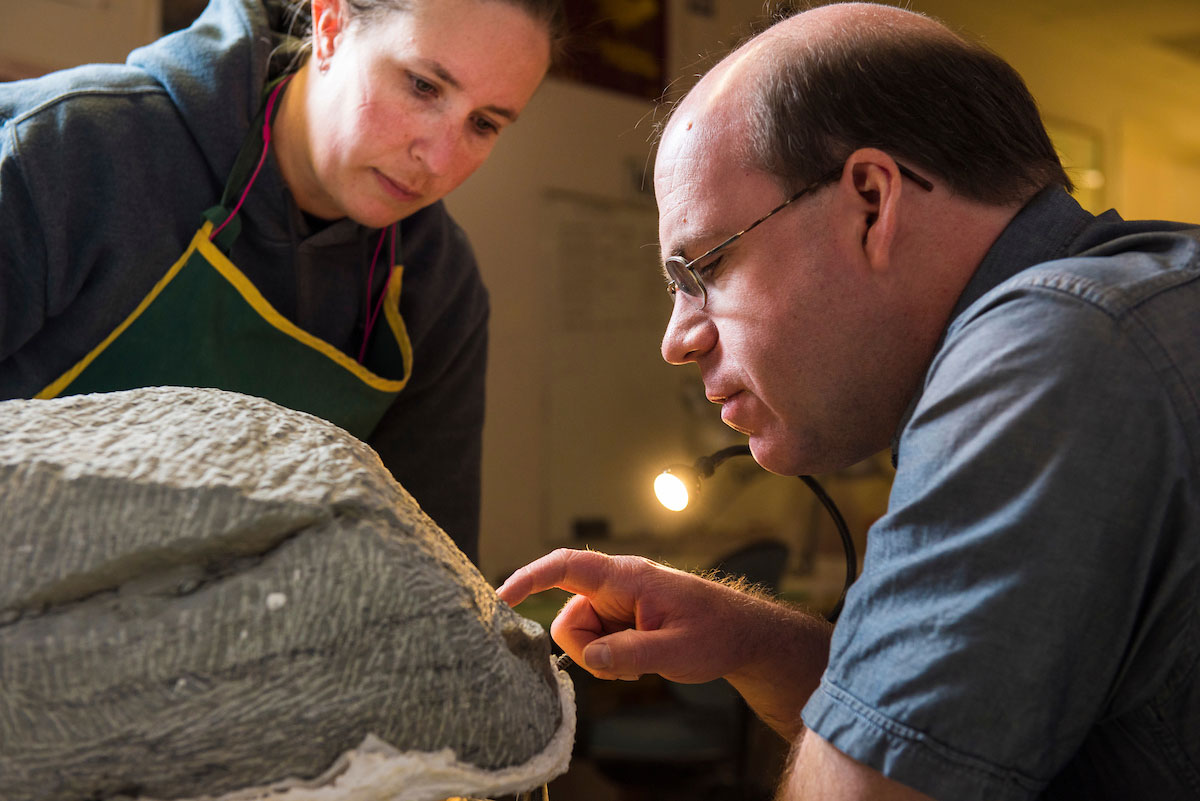
Corwin Sullivan, Associate Professor, and inaugural holder of the Philip J. Currie Professorship in Vertebrate Paleontology and undergraduate student Robin Sissons.
"People love dinosaurs, but paleontology has importance that goes beyond just, 'oh that's a neat dinosaur,'" said Corwin Sullivan, new associate professor in the Department of Biological Sciences. "Paleontology is inherently interesting because it tells us a lot about things that people are interested in philosophically, like where we came from, what's our place in the universe, and the question of evolution versus creation."
Sullivan emphasized that we need to explore the fossil record to see how evolution plays out in the long term--whether with respect to an individual species, a group of animals, or an entire ecosystem.
"If we want insight into how our current episode of global warming and habitat destruction is going to play out and what it might actually mean for the future of life on Earth, the fossil record is really where we have to look. We can't get that information just by looking at modern animals."
In terms of the types of questions he's answering with his research, Sullivan is focused on the origin of flight in birds and nonavian dinosaurs as well as the evolution of respiration in archosaurs, the wider group of reptiles that includes dinosaurs, crocodilians, and pterosaurs.
Originally from Ontario, Sullivan completed his undergraduate work at UVic, a master's at the University of Toronto at Mississauga, and a PhD at Harvard before a postdoc and subsequent faculty position at the Institute of Vertebrate Paleontology and Paleoanthropology (IVPP) in Beijing, China. He was recruited back to Canada to the University of Alberta to fill the new Philip J. Currie Professorship in Vertebrate Paleontology, named after the renowned paleontologist and UAlberta professor, now Sullivan's office neighbour.
In addition to Sullivan's research and teaching are curatorial responsibilities at the Philip J. Currie Dinosaur Museum in Grande Prairie, which opened in 2015. The best known dinosaur-related landmarks in Alberta are Dinosaur Provincial Park and the Royal Tyrrell Museum of Palaeontology, both located in Southern Alberta, but the new museum is helping put Northern Alberta on the map.
In order to get a more complete picture of our prehistoric past, Sullivan says we have to look North as well, even though the terrain is less fertile from a fossil perspective. "The time and effort to discover a good specimen is a lot higher up north than down south, but it's worthwhile to be working up there, because we are finding things we can't find anywhere else. The specimens from Grande Prairie give us a bit of a different picture of the fauna of the Late Cretaceous than the specimens from Dinosaur Provincial Park."
Sullivan and his crew made a particularly significant discovery this past field season, with the excavation of a hadrosaur skeleton from the Wapiti River. "The skull of this specimen is one of the nicest from any fossil vertebrate that's ever come from the Grande Prairie area," said Sullivan. "The hadrosaur is really sort of the jewel in the crown, and it's going to give us a lot of information." The specimen is currently being prepared at the University of Alberta by alumna Robin Sissons.